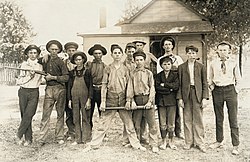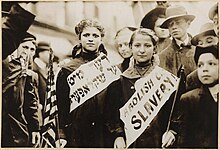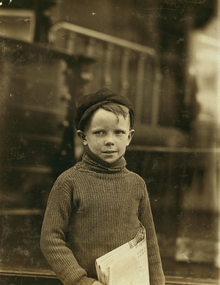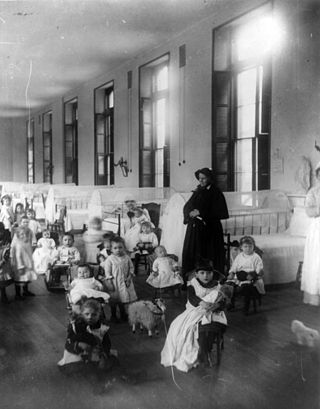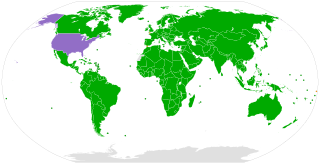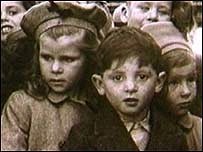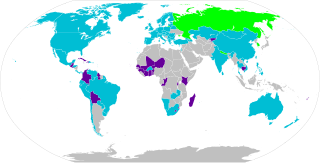| Timeline of 20th century events related to Children's Rights in the U.S. in chronological order |
|---|
| Date | Parties | Event |
|---|
| 1900 | Organizations | "The total number of societies in the United States for the protection of children, or children and animals, was 161." [14] |
| 1901 | Juvenile Protective Association | Jane Addams founded the Juvenile Protective Association to advocate against racism, child labor and exploitation, drug abuse and child prostitution in Chicago and their effects on child development. [1] [15] |
| 1903 | Children's Crusade | Mary Harris "Mother" Jones organized children working in mills and mines in the "Children's Crusade," a march from Kensington, Pennsylvania to Oyster Bay, New York, the home of President Theodore Roosevelt with banners demanding "We want time to play!" and "We want to go to school!" Though the President refused to meet with the marchers, the incident brought the issue of child labor to the forefront of the public agenda. |
| 1904 | National Child Labor Committee | The National Child Labor Committee is formed to abolish all child labor. World-renowned photographer Lewis Hine produced much of his work for the organization. |
| 1909 | White House Conference on Children | On January 25, 1909 President Theodore Roosevelt hosted the first White House Conference on Children after a Washington, D.C. lawyer named James West suggested it. West had spent all of his life in institutions and was concerned about the state of affairs. The conferences were held every decade through the 1970s. [16] |
| 1909 | White House Conference on the Care of Dependent Children | The first White House Conference on the Care of Dependent Children declared that poverty alone should not be grounds for removing children from families. [17] |
| 1909 | Ellen Key | Ellen Key publishes Century of the Child, an influential American book about children's rights. |
| 1912 | Children's Bureau | The Children's Bureau was formed by the U.S. Congress in response to the White House Conference on Children. For the first time child welfare focused on more than disadvantaged children, and became focused on all children. [16] |
| 1915 | Child Welfare League of America | The Child Welfare League of America was founded as the Bureau for Exchange of Information Among Child-Helping Organizations. |
| 1915 | Abraham Flexner | Influential educator Abraham Flexner declared social work focused on children "hardly eligible" for professional status. [17] |
| 1916 | United States Congress | First federal child labor law prohibits the movement of goods across state lines if minimum age laws are violated. This law was in effect until 1918 when it was declared unconstitutional in the landmark case Hammer v. Dagenhart. |
| 1921 | Child Welfare League of America | Founded by C. C. Carstens to act as a federation of 70 child services organizations. |
| 1924 | Child Labor Amendment of 1924 | Congress attempted to pass a constitutional amendment that would authorize a national child labor law; however, this measure was blocked by opposition within Congress and the bill was eventually dropped. |
| 1935 | American Youth Congress | The American Youth Congress forms as one of the first youth-led, youth-focused organizations in the U.S. The same year the AYC issued The Declaration of the Rights of American Youth, which they were invited to read before a joint session of the U.S. Congress. |
| 1938 | Fair Labor Standards Act | President Franklin D. Roosevelt signed the Fair Labor Standards Act, which includes limits on many forms of child labor. |
| 1940 | Working mothers | 8.6 percent of mothers with children younger than 18 were in the work force. [18] |
| 1943 | Kaiser Shipyards | The Kaiser Shipyards on Swan Island in Portland, Oregon opened the first company-owned child care facilities at the entrance to each of their facilities. Hoping to reduce the rate of absenteeism among working mothers, they were the world's largest child care centers and were in operation 24 hours a day. Featuring nurses and child-centered construction, the facilities also provided pre-cooked hot meals for the mothers to take home. Costs were shared by parents and the company. They operated for two years. [19] |
| 1944 | Prince v. Massachusetts | The U.S. Supreme Court held that the government has broad authority to regulate the actions and treatment of children. Parental authority is not absolute and can be permissibly restricted if doing so is in the interests of a child's welfare. While children share many of the rights of adults, they face different potential harms from similar activities. |
| 1955 | Pearl S. Buck | Pearl S. Buck, one of the most popular novelists and adoptive parents in the United States, accused social workers and religious institutions of sustaining a black market for adoptions and preventing the adoption of children in order to preserve their jobs. [17] |
| 1959 | White House Conference on Children and Youth | The United Nations General Assembly adopted Declaration of the Rights of the Child, endorsed in 1960 by Golden Anniversary White House Conference on Children and Youth. |
| 1962 | Child abuse reporting statutes | The first child abuse reporting statutes were explored at a national conference sponsored by the federal Department of Health, federal Department of Education, and the Children's Bureau. [20] |
| 1965 | Abe Fortas | Abe Fortas, a longtime proponent of children's and student rights, is appointed to the Supreme Court. Among many statements on behalf of children's rights, he wrote the majority opinion in Tinker v. Des Moines on behalf of children's right to free expression, along with In re Gault in support of children's right to due process. The Supreme Court took a distinctly different stance towards children's rights after he left in 1970. [21] [22] |
| 1967 | In re Gault | In re Gault was a landmark U.S. Supreme Court decision which established that juveniles accused of crimes in a delinquency proceeding must be accorded many of the same due process rights as adults such as the right to timely notification of charges, the right to confront witnesses, the right against self-incrimination, and the right to counsel. |
| 1970 | In re Winship | In re Winship was a U.S. Supreme Court decision that held when a juvenile is charged with an act which would be a crime if committed by an adult, every element of the offense must be proved beyond a reasonable doubt. |
| 1970 | National Commission on Resources for Youth | The Ford Foundation works with the federal government to develop the National Commission on Resources for Youth, which produces reports, holds conferences and conducts an array of activities focused on promoting youth participation, youth voice, youth empowerment and community youth development across the United States. |
| 1973 | Children's Defense Fund | Marian Wright Edelman founds the Children's Defense Fund, a leading national organization that lobbies for children's rights and welfare. |
| 1973 | Hillary Clinton | In a report examining the status of children's rights in the United States, Hillary Clinton, then a lawyer, wrote that "children's rights" was a "slogan in need of a definition." [23] |
| 1973 | Indiana | The first joint custody statute in the U.S. goes into effect in Indiana, allowing children the right to both parents after a divorce. |
| 1974 | Child Abuse Prevention and Treatment Act | The Child Abuse Prevention and Treatment Act is passed by the U.S. Congress, creating the National Center on Child Abuse and Neglect and other steps designed to increase children's rights and reduce child neglect and abuse. |
| 1975 | National Network for Youth | Founded as the only national membership organization focused solely on the needs of homeless, runaway and disconnected youth. |
| 1978 | Indian Child Welfare Act | The Indian Child Welfare Act was passed by the U.S. Congress and gives tribal governments a strong voice concerning child custody proceedings which involve Indian children, by allocating tribes exclusive jurisdiction over the case when the child resides on, or is domiciled on, the reservation, or when the child is a ward of the tribe; and concurrent, but presumptive, jurisdiction over non-reservation Native Americans’ foster care placement proceedings. |
| 1980 | Adoption Assistance and Child Welfare Act | To establish a program of adoption assistance; strengthen the program of foster care assistance for needy and dependent children; and improve the child welfare, social services, and aid to families with dependent children programs. This act amended titles IV-B and XX of the Social Security Act. [24] |
| 1985 | Working mothers | 50 percent of women with children younger than three years of age were working. [25] |
| 1985 | Student privacy | New Jersey v. T.L.O. (U.S. Supreme Court case on the privacy rights of public school students) |
| 1989 | Convention on the Rights of the Child | The United Nations Convention on the Rights of the Child, or CRC, codifies a range of children's rights into international law, with 189 countries eventually ratifying it. The United States has signed but not ratified the CRC. |
| 1992 | Child Labor Deterrence Act | Senator Tom Harkin first proposed the Child Labor Deterrence Act in Congress, with subsequent propositions in 1993, 1995, 1997 and 1999. "This bill would prohibit the importation of products that have been produced by child labor, and included civil and criminal penalties for violators." [26] |
| 1994 | Convention on the Rights of the Child | The United States becomes a signatory country to the CRC after then-U.S. Ambassador to the United Nations Madeleine Albright signs on behalf of the country. However, the United States Congress does not ratify the agreement. [27] |
| 1994 | Patrick Leahy | Senator Patrick Leahy of Vermont made one of the last attempts to pass the CRC through to the Senate. In a speech to the Senate in 1994, he explained that "The administration’s resistance to ratifying the CRC is due to misunderstandings about the Convention. Opponents claim that it is anti-family or infringes upon states’ rights. The CRC does none of these things." [28] |
| 1997 | Immigration and Naturalization Service | 2,375 unaccompanied children were detained by the INS. [29] |
| 1997 | Flores, et al. v. Janet Reno | Flores, et al. v. Janet Reno was a class action lawsuit filed in 1985 that challenged federal policy dealing with unaccompanied children held in detention by the United States Immigration and Naturalization Service. The Flores agreement, which became effective in 1997, set out a national policy for the detention, release and treatment of children in immigration custody based on the premise that authorities must treat children in their custody with "dignity, respect and special concern for their vulnerability as minors." [30] |
| 1997 | Adoption and Safe Families Act | The Adoption and Safe Families Act (ASFA, Public Law 105-89) was a Federal Act championed by Hillary Clinton and signed into law by her husband President Bill Clinton on November 19, 1997. |
| 1999 | Children's Online Privacy Protection Act | The Children's Online Privacy Protection Act is focused on the online collection of personal information by persons or entities under U.S. jurisdiction from children under 13 years of age. It details what a website operator must include in a privacy policy, when and how to seek verifiable consent from a parent or guardian, and what responsibilities an operator has to protect children's privacy and safety online including restrictions on marketing to those under 13. |
| 1999 | Worst Forms of Child Labour Convention, 1999 | The U.S. ratified this convention on December 2, 1999. [31] |
